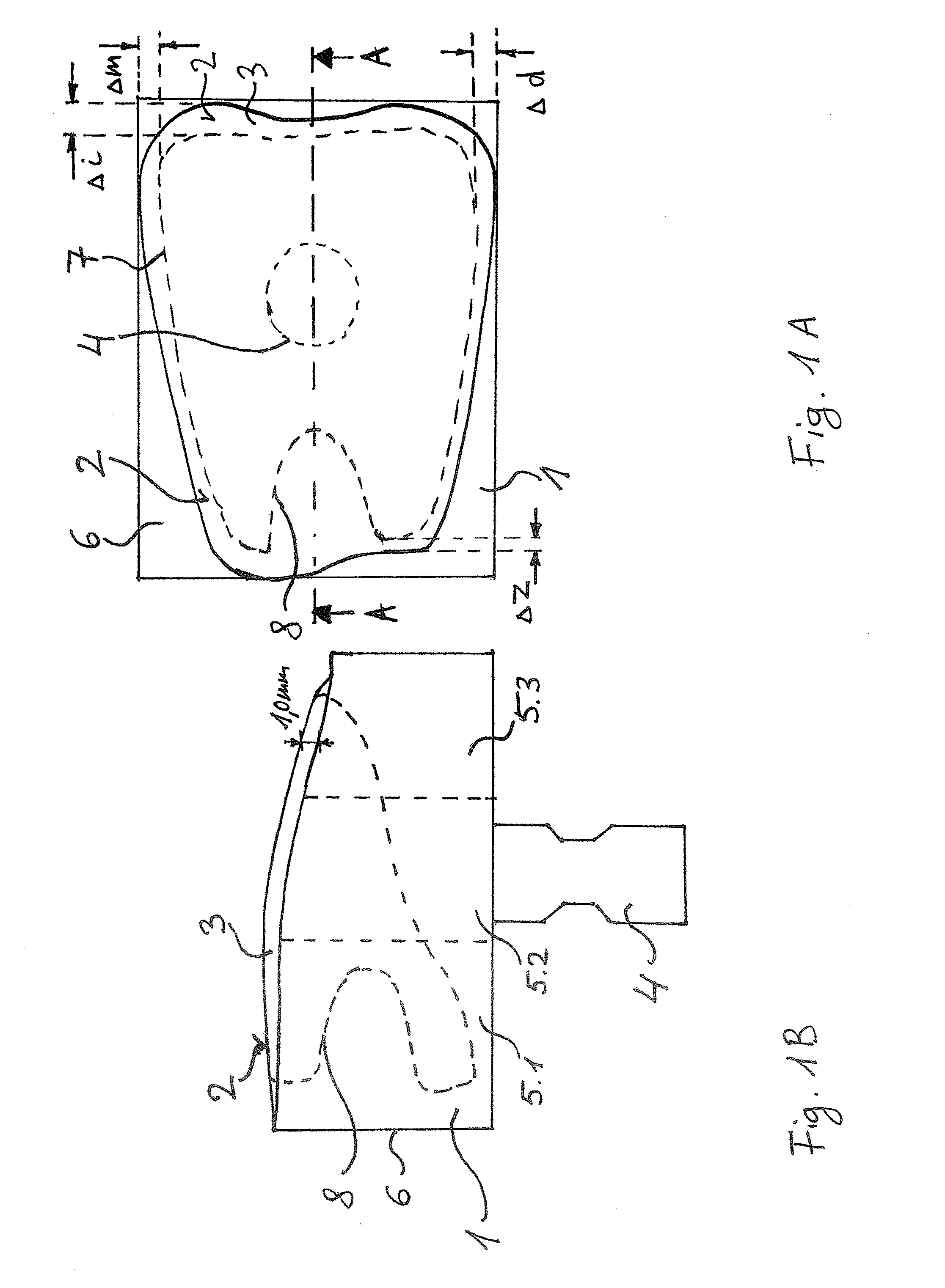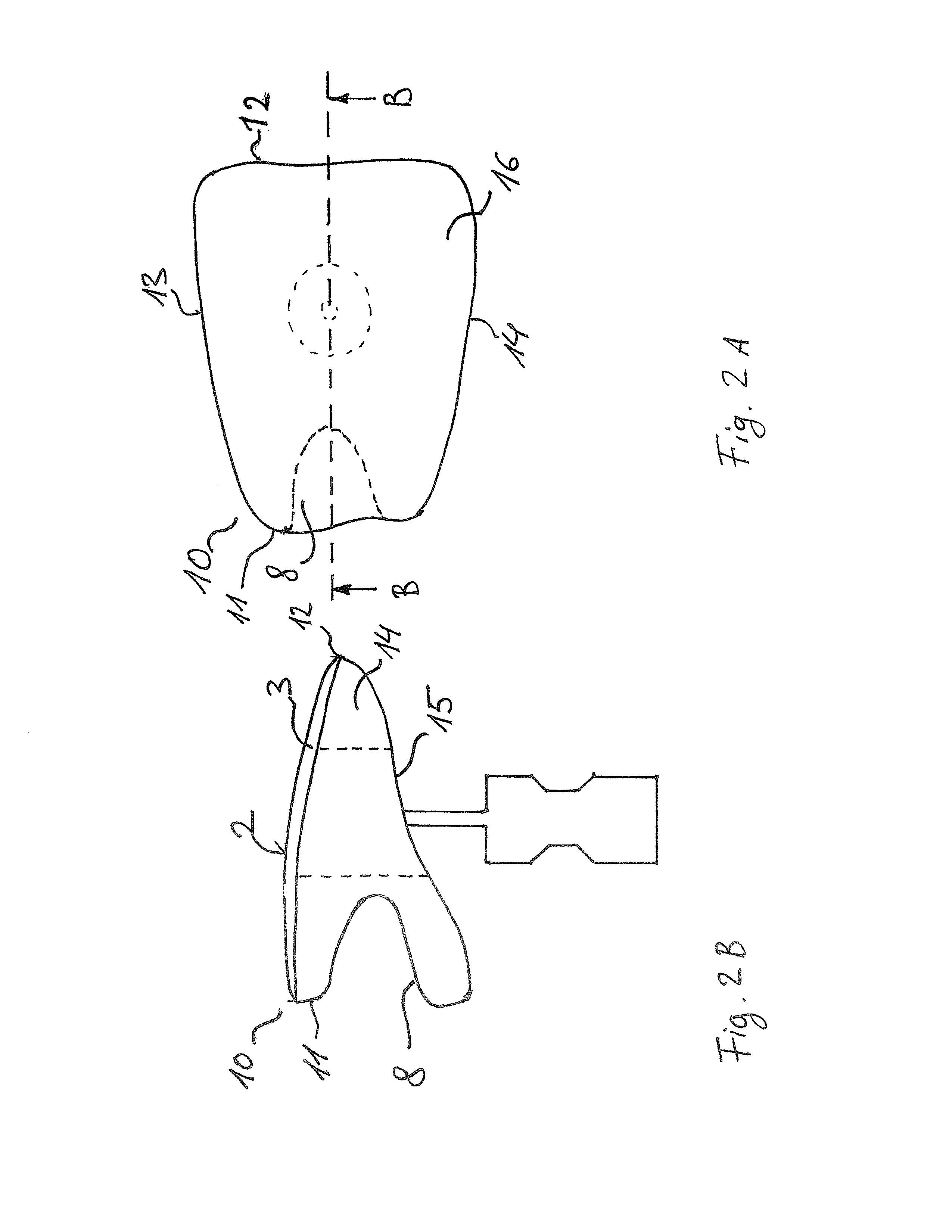Blank and database of prefabricated partial surfaces of dental prosthetics
a dental prosthetic and prefabricated technology, applied in dental prosthetics, medical simulation, tooth crowns, etc., can solve the problems of veneering to dental prosthetic items, no degree of freedom for customizing the remaining exterior surface, and malfunction information, so as to facilitate the design of dental prosthetic items
- Summary
- Abstract
- Description
- Claims
- Application Information
AI Technical Summary
Benefits of technology
Problems solved by technology
Method used
Image
Examples
Embodiment Construction
[0086]FIG. 1A is a top view of a blank 1 for the production of a dental prosthetic item for an incisor and FIG. 1B is a sectional view taken along the line A-A. The blank 1 has a prefabricated terminal subsurface 2, which is disposed on a translucent layer 3. The prefabricated terminal subsurface 2 corresponds in shape to a lower right-hand incisor having tooth number 41 according to the International Tooth Numbering System. The blank 1 comprises a holder 4 for fitting the blank 1 into machining equipment (not shown).
[0087]The prefabricated terminal subsurface 2 has the shape of a labial surface of an incisor. The translucent layer 3 has a maximum thickness of 1 mm at the incisal end of the prefabricated surface and as a result, the prefabricated terminal subsurface 2 disposed over the translucent layer 3 has similar translucency attributes to those of natural incisal teeth.
[0088]The blank 1 can be made of feldspar ceramics and consist of three layers 5.1, 5.2, and 5.3 having differ...
PUM
 Login to View More
Login to View More Abstract
Description
Claims
Application Information
 Login to View More
Login to View More - R&D
- Intellectual Property
- Life Sciences
- Materials
- Tech Scout
- Unparalleled Data Quality
- Higher Quality Content
- 60% Fewer Hallucinations
Browse by: Latest US Patents, China's latest patents, Technical Efficacy Thesaurus, Application Domain, Technology Topic, Popular Technical Reports.
© 2025 PatSnap. All rights reserved.Legal|Privacy policy|Modern Slavery Act Transparency Statement|Sitemap|About US| Contact US: help@patsnap.com



